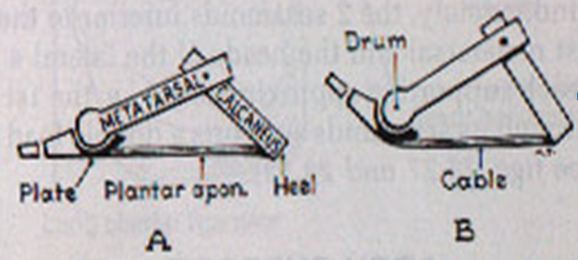The windlass mechanism is the foot own arch supporting mechanism.
The windlass mechanism is a biomechanical process that occurs in the foot during the gait cycle, specifically during the propulsion phase of walking or running. It involves the winding and tightening of the plantar fascia, a thick band of connective tissue that runs along the bottom of the foot from the heel to the toes.
The windlass mechanism:
- As the foot lifts off the ground, the toes begin to extend (dorsiflex) and the foot starts to push off.
- As the toes extend, tension is created in the plantar fascia, which starts to tighten.
- The tightening of the plantar fascia helps to raise the arch of the foot and stabilize the midfoot and forefoot.
- This tightening action creates a rigid lever for the foot, allowing for efficient transfer of forces from the foot to the lower leg during propulsion.
The windlass mechanism serves several important functions:
- Arch support: By tightening the plantar fascia, the windlass mechanism helps support and maintain the arch of the foot. This provides stability and helps distribute forces evenly across the foot.
- Energy conservation: The windlass mechanism helps store and release elastic energy during the gait cycle. The tightening of the plantar fascia stores energy, which is then released during toe-off to assist with propulsion and reduce the energy expenditure of the muscles.
- Foot stability: The windlass mechanism contributes to the stabilization of the midfoot and forefoot during weight-bearing activities. It helps prevent excessive foot pronation (inward rolling) and provides a stable base for efficient movement.
The windlass mechanism is essential for proper foot function and efficient walking or running mechanics. It helps optimize foot posture, absorb and transfer forces, and conserve energy during the gait cycle. Disruptions or abnormalities in the windlass mechanism can contribute to foot problems such as plantar fasciitis, flat feet, or altered gait patterns.
The windlass mechanism is influenced by various factors, including foot structure, flexibility of the plantar fascia, and muscle strength and coordination. If you have concerns about your foot mechanics or experience foot-related issues, it’s advisable to consult a healthcare professional, such as a podiatrist or physical therapist, for a comprehensive evaluation and appropriate management.

